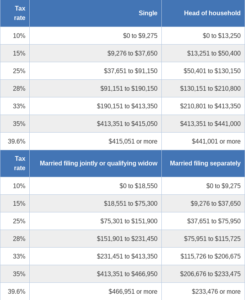In response to a recent question we wrote this article to clarify some elements relevant to many of our clients who have rental real estate in their investment and business portfolios.
2017’s Tax Cuts and Jobs Act amended the Internal Revenue Code in many ways, including a provision for a “qualified business income” (QBI) deduction. This article discusses the availability of this deduction.
Applying this deduction to the case of taxpayers with personally-owned rental property was challenging and the IRS created a “safe harbor” allowing taxpayers to have a tool upon which they can rely in making claim to this deduction. The safe harbor applies to “rental real estate enterprises” which are discussed below. In order to rely on it, the response to all of the following questions must be “yes.”
- Is the property held in a “rental real estate enterprise?”
-
- Is the property “held to generate rental or lease income?”
- Is the property an “interest in a single property or interests in multiple properties?”
- Does the taxpayer personally own or own the property(ies) in question through a disregarded entity (Example: A single member LLC)?
- Does the taxpayer keep separate accounting books and records that reflect income and expenses for each rental real estate enterprise? Note that we assist clients with these requirements.
- 250 Hours: For rental real estate enterprises that have been in existence less than four years, did the taxpayer spend 250 or more hours performing rental services in the year of the deduction? Note that an IRS auditor will request records of this time spent in the event of an audit. For other properties (beyond the four years), was 250 hours documented in at least three of the past five years?
- Does the taxpayer maintain contemporaneous (not created after the fact) records, including time reports, logs, or similar documents, regarding the following: Hours of all services performed; description of all services performed; dates on which such services were performed; and who performed the services? Note that we recommend our clients use a mobile app to document these requirements.
- Is the taxpayer willing to attach a statement to the taxpayer’s return filed for the tax year in question that the taxpayer is relying on the safe harbor?
If the responses to the preceding questions are all “yes,” an interest in a rental or rentals can be treated as a single trade or business for purposes of this deduction. We want to note that even if the safe harbor does not apply because one of the questions above has a “no” response, the QBI deduction may still be available through the 199A provisions themselves. Using this approach may increase audit risk and involve additional documentation burdens. The preceding link provides a wealth of information on QBI in general.
This information is provided for discussion purposes only and does not constitute tax advice. Readers should discuss their specific situations with us or another qualified tax professional.




